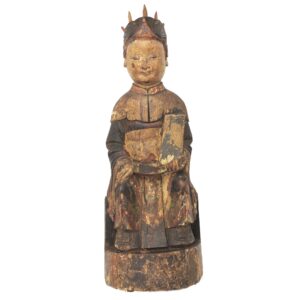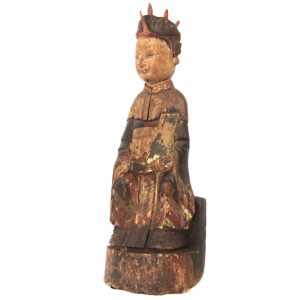Antique Female Taoist Priest with Hu Tablet, China #19154
Original price was: $495.00.$295.00Current price is: $295.00.H: 12 ” W:4.3 ” D: 2.25 ” | FREE SHIPPING WITHIN CONTINENTAL U.S.
Charming consecrated image of female Toast priest with Phoenix headdress holding a hu tablet. Women were welcomed as priests since Taoism beginnings.


